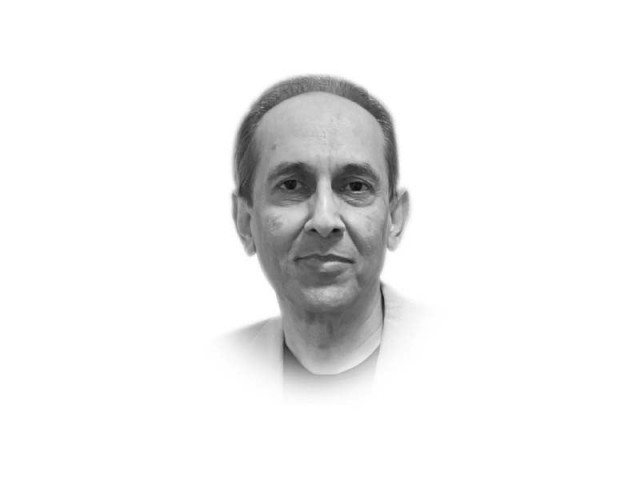Are the kids alright?
Pakistan has the highest growth rate of stunted children at 45% followed by Afghanistan at 41%

I am a hypocrite, a phony and a two-faced crook. From the lap of luxury, right here in my room at the Islamabad Marriott, I will write of a child in rags, a five-year-old boy without shoes, who loiters and plays in hot sand on a seething afternoon somewhere on the outskirts of Sheikhupura. He is skinny as a needle. His dark sunburnt skin hangs loose from his bony frame. He is hungry. He is stunted.
I have just returned from Sakura, the five-star hotel’s Japanese restaurant, where I had sushi, tempura and red snapper followed by a scrumptious portion of French pralines. As you can tell, I’m not any hypocrite; I’m a US-educated hypocrite with refined manners and good taste. I wear Ralph Lauren and Boss. It serves well to conceal my phony interior. I studied Kant, Shakespeare and Dostoevsky. I completed my master’s thesis on human glioblastoma cells at a research hospital deep in the heart of Texas. Oh yes, all my ex’s live in Texas. But most importantly, I can speak English fluently.
Back to the boy in Sheikhupura. He is not the only stunted child in the town. Pakistan has the highest growth rate of stunted children at 45% followed by Afghanistan at 41% (PubMed, 2020). Poor maternal nutrition, unhygienic living conditions, contaminated drinking water, malnutrition, undernutrition, poor sanitation, lack of education and absence of government-supported community-driven interventions, all contribute to the problem. As a Unicef study stresses, stunting is not only a physical impairment, it adversely affects mental and cognitive functions. To make matters worse, 23 million children aged 5 to 16 do not attend school. For Pakistan, it’s a national emergency. Our children are our future.
It has been shown that there is a vital link between nutritional status, human capital and economic standing. Eradicating poverty and malnutrition and improving health and education will eventually lead to a more robust human capital capable of increased innovation and productivity.
Due to recent economic meltdown, Pakistan has become a living hell. But whose Pakistan? There is Pakistan of those who drive Land Cruisers and Range Rovers and live in luxurious mansions and sprawling bungalows. They send their children abroad for studies. According to World Inequality Database, the top 10% in Pakistan have a share of 43% of national income. In the other Pakistan, children as young as 10 work in factories and brick kilns all day long. They are employed in cotton harvesting, carpet weaving, coal mining, forced begging, sexual exploitation.
Can you hear anyone asking: are the kids alright?
In the 1990s, I felt proud as a Pakistani when I found out that we accounted for 75% of world production of footballs (soccer balls). But who was stitching the footballs? Children between the ages of 5 and 14. Whose children? Yours? Mine? They are also hired as domestic help. The homeowners treat them worse than their pets. On a tragic day in November 2019, a 16-year-old maid was beaten to death for demanding to get paid. In January 2014, a 10-year-old boy servant in Lahore was accused of stealing. His punishment? He was mauled to death after his hands and feet were tied with rope. Unfortunately, these demonic atrocities are more rampant in our society than we would like to admit.
I am back in Nadia Café for the afternoon High Tea. I’m enjoying my second cup of tea. Yes, a second cup. After all, I’m a two-faced crook.
Now, back to the 5-year-old hungry boy. The very skinny boy. The boy with no shoes, no cap. He hasn’t eaten anything since yesterday. He is not loitering or playing any longer. He is holding his empty stomach. His tearful eyes are now chasing every passerby. Does anyone even know he’s there? He is begging for a freaking roti for God’s sake!
Can you hear Ibne Insha asking: ye bacha kis ka bacha hai?
This child. This dark-skinned sickly child.
This child with no toys.
This stunted child. Whose child is this?
This child is mine.
This child is yours.
Ye bacha sub ka bacha hai.
Published in The Express Tribune, June 22nd, 2022.
Like Opinion & Editorial on Facebook, follow @ETOpEd on Twitter to receive all updates on all our daily pieces.















COMMENTS
Comments are moderated and generally will be posted if they are on-topic and not abusive.
For more information, please see our Comments FAQ